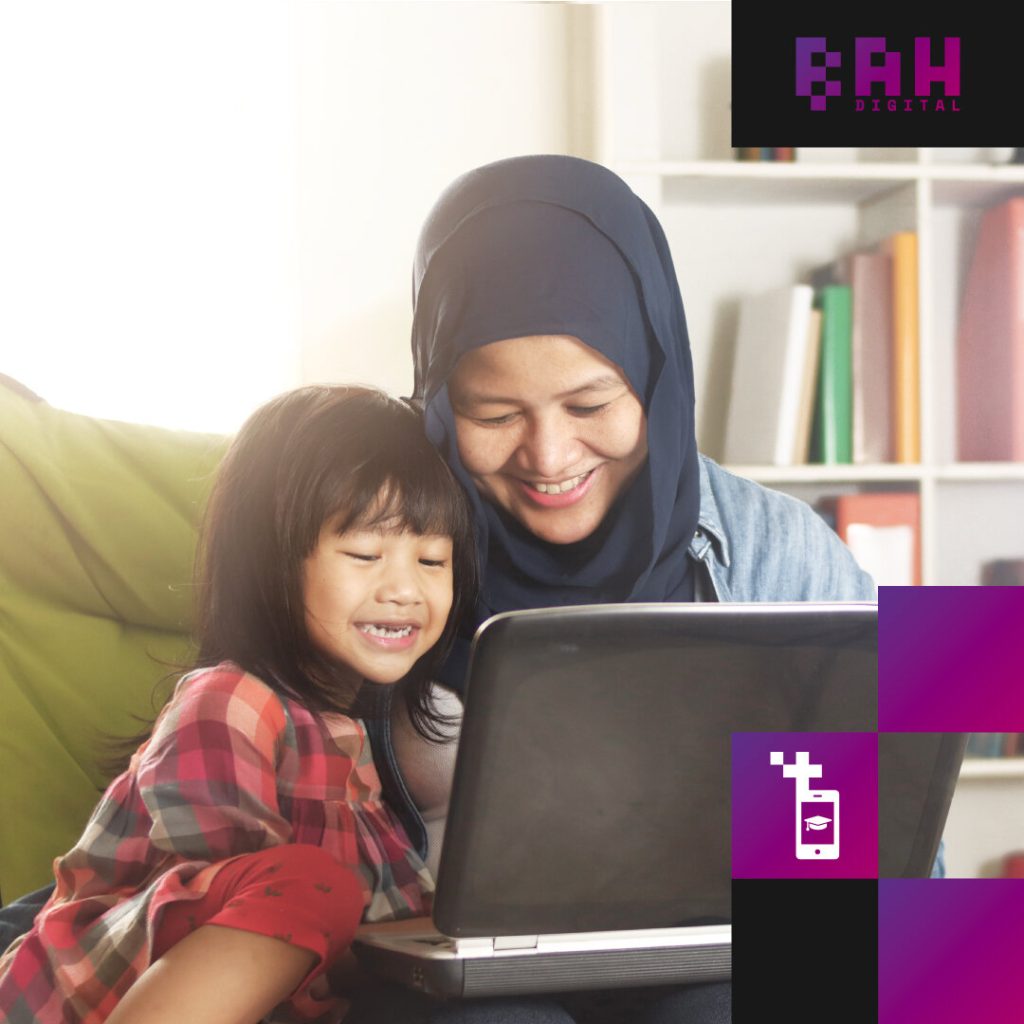Virtual Learning Tips for Parents

Give your child’s online classes a sense of home.
-
The e-learning industry is predicted to grow up to USD $345 billion by 2025.
-
Help your child prepare for their classes with a space that has all the necessities.
-
Guide them through the learning processes and how they can manage their emotions.
-
Give them ample motivation to work smart and give more personal praises.

E-learning became an indisputable necessity during the first wave of the pandemic. But after rigorous months of preventive measures, the pandemic eventually became more controlled in Brunei, thus allowing schools and institutions to once again open their doors to classroom learning.
So, what happens to virtual learning from here on out?
It’s a good start to think of virtual learning not as a fail-safe for the pandemic, but rather as a push towards the long-term goals of developing an all-encompassing educational system.

Though contemporary technologies for virtual learning are mostly restricted to studying from the comforts of a home for the time being, experts project that the market for e-learning might grow up to USD $325 billion by 2025.
Now, as a parent, here are 3 ways you can aid in your child’s virtual education.
#1. Preparation

An environment for learning
The first thing to work on is to create a space. It should ideally allow children to feel like they’re in a studious environment, while also knowing that they’re home. Examples would be to allow the child to decorate the space with the materials of their own choice.
Ensure that all necessities are present
Before your child can begin their distant learning classes, they would need a few necessities. The first should be a stable WiFi connection and a device to connect with, note-taking books or apps, as well as writing tools.
Kid-friendly apps like Evernote or Meernotes are great at keeping track of their progress, while still being simple enough to use. In addition, there are a number of good resources online to encourage your child to delve deeper into e-learning, such as websites like LearningWorks for Kids, ABCmouse or YouTube tutorials.
Define clear rules and goals
Before your child jumps into e-learning, sit down and talk to them to discuss certain set rules, such as: in Zoom calls, the child may sit however they want, just as long as they are centred in the video frame; and for older children, no phones while class is in session. When it comes to setting up goals, it can be as simple as completing the assigned homework of the day, and a step forward is for homework unsupervised.
#2. Learning Processes

Teaching and understanding
A crucial part of parenting comes from helping our kids with homework, but parents must also understand the fine line between actually teaching and giving them a crutch.
Find out a way to explain a concept or subject to the child without giving them a direct answer, this prompts them to work independently while grasping the curriculum.
Open up conversations on stress regulation
Stress can be a very hard idea for children to grasp, so take the time to open up and let them recognise what emotions they’re feeling.
This encouragement will let children attach their emotions to their activities, knowing when to work on something, and when not to.
Completion and communication
After your child finishes their first distant learning class, it’s time for a break! Check with them if all work has been completed, and if not, understand why it’s not.
If your child is having difficulty completing, get in touch with the teacher for help. Communication between parent and school ensures that no stone is left unturned, be sure to always check the proper channels daily for any messages from the school.
#3. Motivation

Encourage self-directed learning
Everyone has their favourite subject in school, now’s a good time to find out what’s your child’s favourite! Begin with their strengths, and then slowly build on the ones that they have less interest in.
Once that has been established, allow your child a degree of freedom when it comes to their educational journey. In doing so, they will gain a sense of maturity for themselves.
Teaching digital discipline
Giving a child a device for online classes may sometimes lead them to distractions. So, instead of keeping a watchful eye, give them a time frame where they can play, as long as they finish their work.
But, locking them with a tight schedule may also backfire. If that’s the case, you could always try working with ideas that set goals alongside rewards.
Give praise to where it’s due
This ties in with the previous point of motivating a child’s educational journey. Most of the time, we give either too little, or too much praise for our child’s milestones.
Progress should always be rewarded with praise, but instead of the usual stern “good jobs”, try coming up with a more personal way to show them that you noticed their hard work.
Closing the Gap in Distant Learning
The large expanse of e-learning’s potential steers us in line to the big educational blueprint for the future.
As a national agenda, the Ministry of Education (MoE) Brunei has made comprehensive guidelines that aim to support the growth of ‘online learning’ through the lens of: teachers, parents, special needs, and early childhood learners.
So no one ever gets left behind.

Now, picture a classroom where attendance is done, from home, in a virtual environment, with an all-inclusive system where education is wholly given, regardless of geography or status; a world where everyone has the right to education.
But for now, seeing as e-learning is already primarily done from home, parents hold the pivoting role in encouraging their child in this new journey. But this doesn’t single out the fact that teachers are also just as important in making the learning process an enjoyable one.